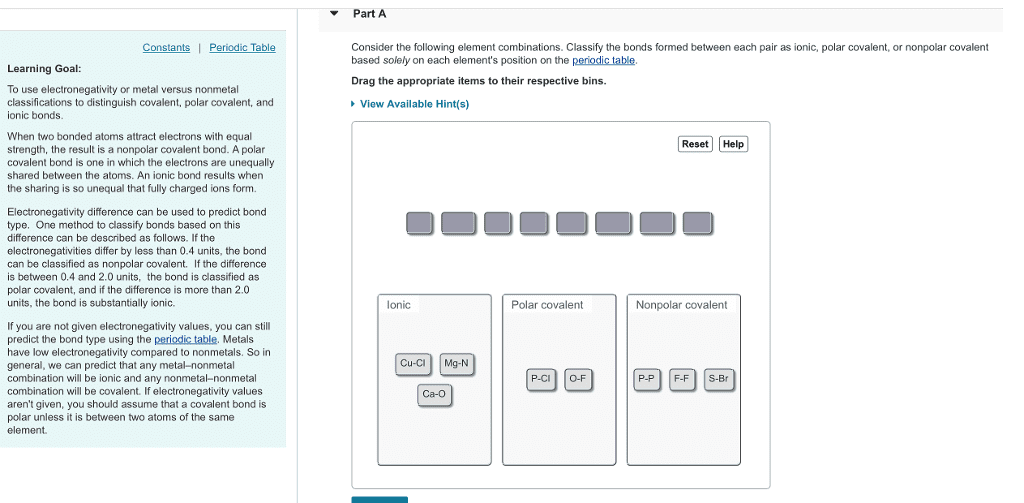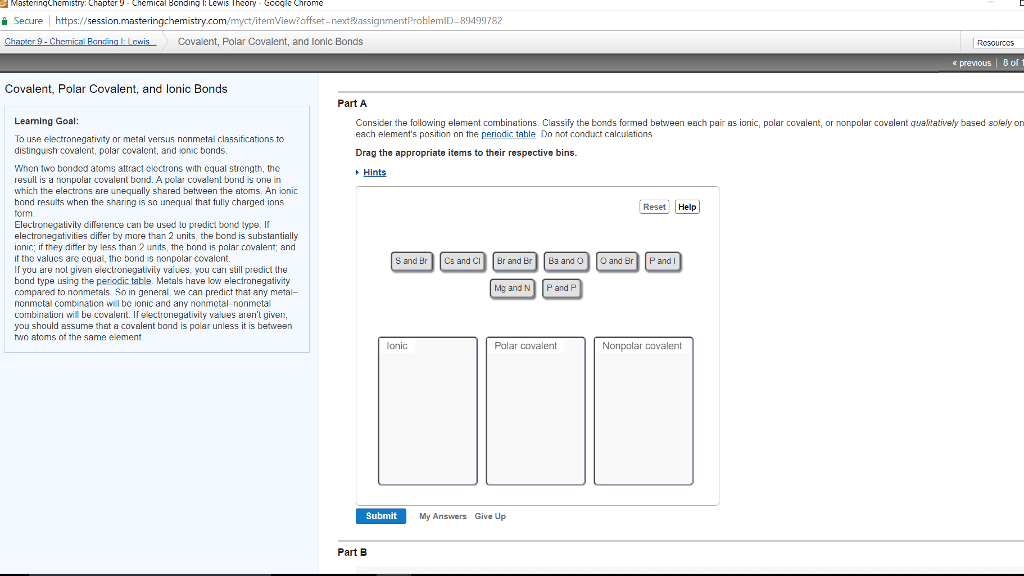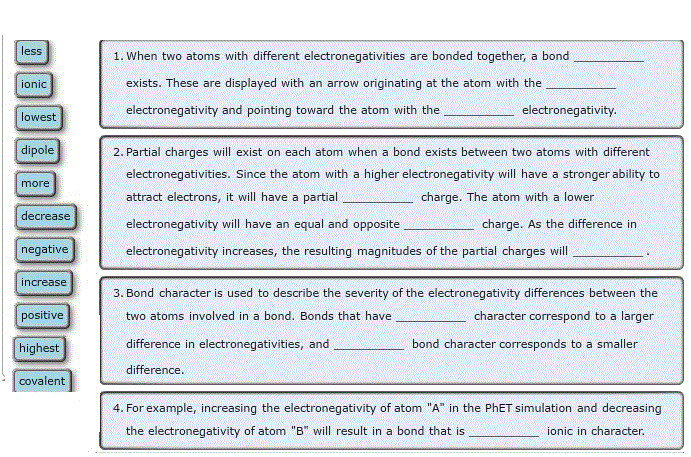01:160:110 Lecture Notes - Lecture 6: Covalent Bond, Electronegativity, Lewis Structure
Document Summary
Chemical bond: a mutual electrical attraction between the nuclei and valence electrons of different atoms that bind the atoms together. Ionic bonding: chemical bonding that results from the electrical attraction between cations and anions. Covalent bonds: results from the sharing of electron pairs between two atoms. Electronegativity: a measure of an atoms ability to attract electrons. Nonpolar covalent bonds: a covalent bond in which the bonding electrons are shared equally by the bonded atoms, resulting in a balanced distribution of electrical charge. Polar-covalent bond: a covalent bond in which the bonded atoms have an unequal attraction for the shared electron. Molecule: a neutral group of atoms that are held together by covalent bonds. Molecular compound: a chemical compound whose simplest units are molecules. Chemical formula: indicates the relative numbers of atoms of each kind in a chemical compound by using atomic symbols and numeric subscripts.




